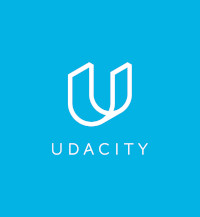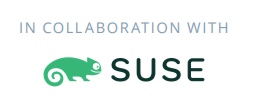| The Cloud Native Application Architecture Nanodegree - Foundations |
| Written by Nikos Vaggalis | |||
| Monday, 14 June 2021 | |||
Page 1 of 2 In cooperation with SUSE, Udacity is launching a new highly practical, project-oriented Nanodegree to learn how to design and deploy microservices by leveraging cloud native tools and patterns. The Cloud Native Application Architecture Nanodegree aims to: Meet the growing demand for cloud native architects and learn to identify the best application architecture solutions for an organization’s needs. The program, which is at intermediate level, will take four months with 10 hours per week effort and has as its pre-requisites some familiarity with HTTP, Python, Git, Linux, Docker. While this program is now up and running, with a session starting on June 16 and thereafter at regular intervals, Udacity invited students who wanted an introduction to Cloud Native Applications to participate in a 2-month Cloud Native Application Foundations course. This forms part of Scholarship Challenge Phase paving the way to one of 300 full scholarships to the complete Nanodegree. To fill us in on what is necessary in order to qualify for a full scholarship, the Udacity Scholarships Community team launched a 1-hour Orientation over Zoom, in which all entry-level scholarship recipients took part:
Those requirements aside,students intending to proceed to the full program hould posses knowledge in:
The full Cloud Native Application Architecture Nanodegree sets out to enable students to run and manage scalable applications in a cloud native environment, using open source tools and projects like ArgoCD, gRPC and Grafana. Students will learn to identify the best application architecture solutions for an organization’s needs, design a microservice architecture by leveraging cloud native tools and patterns, implement best practices in Kubernetes security, and use dashboards to diagnose, troubleshoot and improve site reliability. It is comprised of 4 courses and a final capstone project: Course 1: Cloud Native Fundamentals The Foundations course in essence unlocks Course 1 and the good news is that it will be turned into a free course at some point after its initial presentation hence anyone can attend it. So if you are interested in the subject, despite not being one of the scholarship challengers, read on.
Foundations is comprised of 5 lessons: Lesson 1: Welcome to Cloud Native Fundamentals Evaluate the cloud native ecosystem • Explore CNCF (Cloud Native Computing Foundation) and Lesson 2: Architecture Consideration for Cloud Native Applications • Choose monolith or microservice based-architecture for an • Consider and evaluate the involved trade-offs for monoliths • Apply good development practices to an application Lesson 3: Container Orchestration with Kubernetes • Use Docker to package an application and distribute it via • Bootstrap a Kubernetes cluster using k3s • Explore Kubernetes resources for an application deployment • Differentiate between declarative and imperative Lesson 4: Open Source PaaS • Understand the usage and abstracted components while • Explore application deployment with Cloud Foundry Lesson 5: CI/CD with Cloud Native Tooling • Explain CI/CD and its benefits • Apply Continuous Integration fundamentals using GitHub • Apply Continuous Delivery fundamentals using ArgoCD • Use Helm, as a configuration template manager, to • Deploy an application using ArgoCD and a Helm chart
|
|||
| Last Updated ( Tuesday, 15 June 2021 ) |




